†
††††††††††† I got up at
My first stop would be the


††††††††††† I then went
to buy a day pass. I had trouble getting into the station because it wasnít
good until

††††††††††† I then rode the train to Glenmont. At Glenmont, my train went out of service. There was another out of service train on the other platform track. The two trains both departed to the yard at almost the same time. The yard is to the north of the station, so there was no danger of a collision. I filmed the trains pulling out and then went upstairs to catch a Ride-on route 26 bus.
††††††††††† The bus arrived a few minutes later and I rode it to the intersection of Layhill and Bonifant. I then got off. Just before I began my walk, I went to a gas station across the street and bought an ice cream sandwich because it was hot out.
††††††††††† Itís a fair
walk to the


††††††††††† The
entrance to NCTM was at the other side of the overpass. I slipped by and walked
up the driveway. The new





††††††††††† I then went
outside to ride on 4603. At the new
††††††††††† The day I visited, the service level was red. A lot of the ties on NCTMís original line have deteriorated and need replacement. However, they hope to be running service level white in a month or so.
††††††††††† I went outside and photographed 4603 before I got on.

††††††††††† After a few more people got on, the car soon departed. We passed NCTMís two new car barns. I caught a glimpse of 4602 in the far barn. After the car went halfway around the loop and stopped. The motorman gave a history of the museum and the car. However, he said 4603 was built in 1954 which is wrong; the car was built in 1951. I told him, but he didnít seem to appreciate the correct facts. He pointed out the highway and pointed out that the old visitors centre was located in what is now a man-made lake!
††††††††††† 4603 soon arrived back at the new visitors centre. I got off and took a photo.

††††††††††† There was a
tour of NCTMís display barn. I joined it. We first stopped at the conduit
exhibit. When


††††††††††† We then went into the display barn. One of the first things I saw was a display about the cars that were lost in the 2003 car barn fire. I took some pictures of the display.




††††††††††† I then saw
a display on how the cars from


††††††††††† PCC #1430
was build in the middle of World War 2 to handle the increased ridership. Since
streetcars werenít high on the necessary to have list, the war commission only
allowed it and its sisters to be built with the bare minimum of materials. When

††††††††††† I then photographed the European cars.




††††††††††† After the tour was over, I went back into the main visitors centre. Prior to my trip, I arranged to get a tour of the maintenance barn which isnít usually open to the public. I met up with a member who let me to the barn. It was then I photographed PCC 4602 in its new home.

††††††††††† I then photographed other cars in the barn.




††††††††††† I also
photographed
I also learned that when 4603 was tested on the loop, something on the back truck caught something on the track. The protrusion was cut off. 4602 has the same problem, but its protrusion hasnít been cut off and may not with the plans to make the curve less tight.

††††††††††† I also learned that 4602 is not as good condition as its sister 4603. Prior to coming to NCTM, I heard its heating dampers were rusted in the closed position. Time to get the WD40! 4602 has had some other glitches which are being worked out and has operated at NCTM since the museum reopened. I then photographed Third Avenue Railway System car 678 before we left the barn. I also learned that 4603 has had its paint touched up since it arrived at NCTM back in 1996.

††††††††††† Once back
in the visitors centre, I opted to go for another ride on 4603. Before I got
on, I talked a bit more with the person who showed me 4602. We talked about the
2003 fire. He said his biggest loss was
††††††††††† We got on 4603. I was the only passenger. Since I heard the history, he skipped it and ran the car around the loop twice. After I got back, I went into another one of NCTMís new exhibits: a room that shows silent movies with streetcar scenes.† One such movie scene had the hero rushing to stop a wedding and with at one point he stole a streetcar!†
††††††††††† I then went outside and filmed 4603 going around on its next loop.


††††††††††† After 4603 returned, I went back inside the main exhibit hall and looked around until it was time for the next run. I rode 4603 again. After the ride, I got off and took one more photo of 4603.


††††††††††† I looked in
the gift shop but didnít get anything. I then left the museum. As I walked down
the driveway, I saw some fire trucks racing past the entrance going further
east. I then walked back to the intersection of
††††††††††† After lunch I walked over to the bus stop. I caught a Ride-on Orion 5 back to the Glenmont station. I got off and took some bus photos.


††††††††††† I then got
on the subway and rode the red line south. I got off at
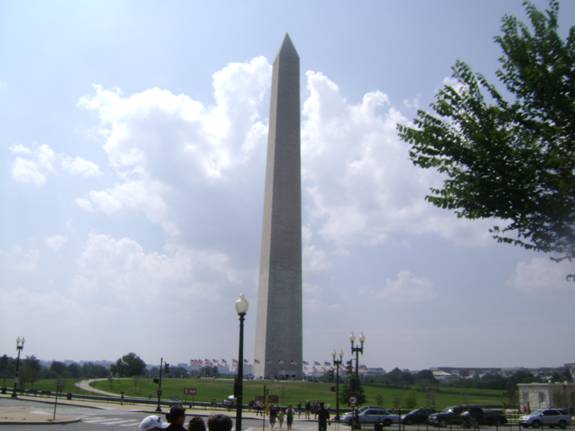
††††††††††† I walked
over to see if I could get tickets, but saw all the tickets were sold out for
the day. I then took a picture of the

††††††††††† Next, I decided to visit the Smithsonian. I walked over to the American History building. I went inside and went to the transportation exhibit. I photographed a John Bull steam locomotive.

††††††††††† I then found an exhibit about the Chicago L which had former CTA PCC L-car #6719 on display.

††††††††††† After looking at a few more exhibits, I photographed former Southern steam locomotive 1401.

††††††††††† Next, I photographed a model of the German Zeppelin Graf Zeppelin.

††††††††††† I then went
into the maritime exhibit and photographed a model of the


††††††††††† I also photographed a few more ship models.




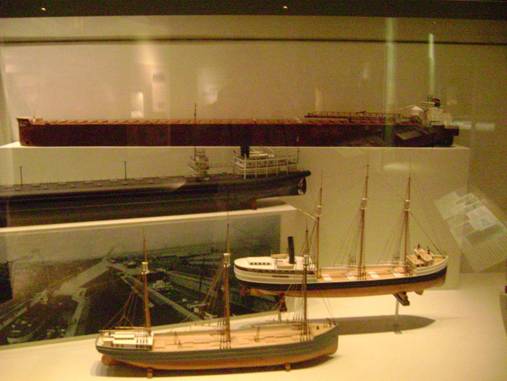




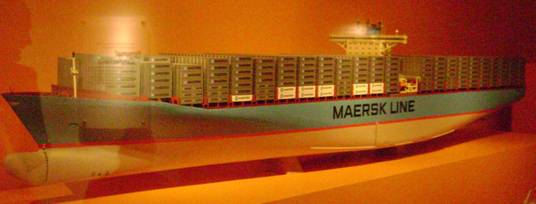

††††††††††† Next, I
photographed a



††††††††††† I then photographed streetcar #303 on display.


††††††††††† I then photographed a model of an early refrigerator box car and an exhibit on camera. I saw one camera that was a combination camera/machine gun. Given the harassment of photographers in this day and age, I have mixed feelings about it. On one hand, it could give the impression that photographers are terrorists. On the other, any photographer who is sick of being hassled and/or in a fight with security guards/police/overzealous people could use the gun!


This is the combination camera-gun. Imagine if a modern version of this was for sale today!
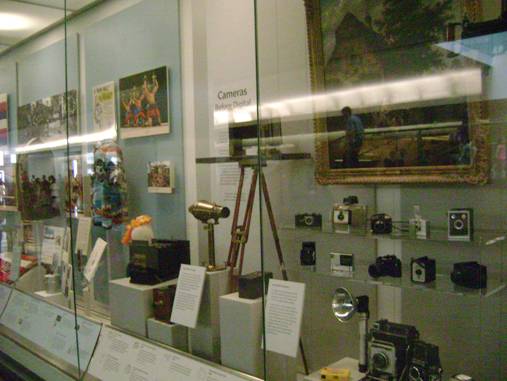
††††††††††† I then went to other exhibits in the building and took some photos.




††††††††††† I visited the presidential section then went onto the war section. I took some pictures of the war section in the pre World War 2 section of the exhibit.






This poster encouraged people to enlist in the
††††††††††† I then went
into the World War 2 part and photographed a display on the attack on



††††††††††† I went to the Cold War part and photographed what used to be part of the Berlin Wall.

††††††††††† I went to
the more recent part of the exhibit and photographed displays from the



††††††††††† I looked at
the exhibit on the war in

I looked into the gift shop before I walked to the Air and Space museum part of the Smithsonian which I had visited in 2007. It was a long walk and I regretted not riding the Metro one stop which would have taken me right there.
††††††††††† I finally got there and looked in the gift shop before I walked over to the commercial aviation exhibit and photographed the cockpit of the 747 I had seen in 2007.


††††††††††† I then photographed the history of the US Air Force.





††††††††††† I then took a few more photos before I left.



††††††††††† I then left
the Smithsonian. I went to the Metro and rode a few stops and got off and took
some pictures of the

††††††††††† I then walked
back to the Metro. I got on the

Hereís a 1000 series car confined to the middle of the train for the rest of their service lives.

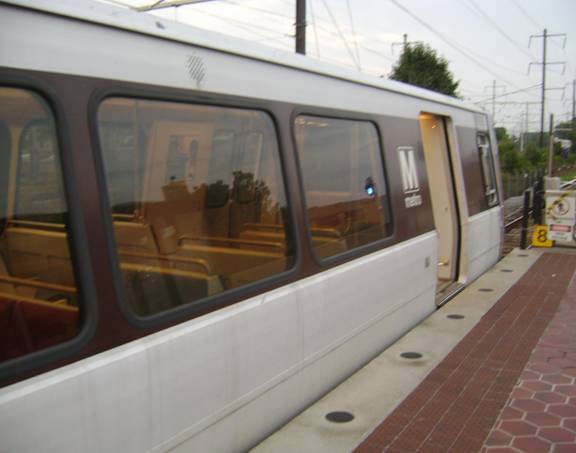
††††††††††† I saw there was a Metro Transit Flexible at the bus bays. I photographed it.

††††††††††† I wanted to ride, but the bus was out of service. I walked into the Amtrak/MARC station to see if there was a train coming soon. However, there wasnít. I photographed an Orion 5 operated by ďThe BusĒ before I got on the Metro.

††††††††††† I rode the metro downtown. I got off at one stop hoping to get a bus to Union Station, but it took too long, so I rode the Metro there instead. By the time I got there, the fast food restaurants were closed. I rode the Metro one stop north because I saw there was a Wendyís nearby, but I couldnít find it. I ended up buying dinner at the Greyhound station.
††††††††††† After dinner, I walked back to the Metro and waited for a northbound train. While waiting, I photographed an Amtrak switcher moving a cut of Amfleet coaches to the maintenance shops. I photographed it.

![]()
††††††††††† I then
caught a red line train to
Click here to read about the rest
of my time in